This is an Anscoflex II, a twin lens box camera made by Ansco of Binghamton, New York between the years 1954 and 1958. The Anscoflex II is a more advanced version of the original Anscoflex which was introduced a few months earlier. The only difference is the addition of two knobs below the taking lens which add a close focus lens and a yellow filter for improved contrast. Both cameras were sold concurrently with the Anscoflex II costing only $2 more. It shoots 6cm x 6cm images on 620 format roll film, uses a brilliant waist level viewfinder, and has simple focus free operation. The Anscoflex is notable for being styled by famed American industrial designer Raymond Lowey who created iconic 20th century designs for companies such as Studebaker, Coca-Cola, Boeing, various railroad companies, and many others.
Film Type: 620 Roll Film (twelve 6cm x 6cm exposures per roll)
Lens: Unknown Focal Length and Aperture (Probably ~80mm and ~f/11) and Unknown Elements (Probably a Doublet)
Focus: Fixed, ~7ft to Infinity, With Close-Up Filter, ~3.5 feet to ~7 feet
Viewfinder: Waist Level Brilliant Reflex Viewfinder
Shutter: Rotary Metal Blade
Speeds: Single, ~1/50
Exposure Meter: None
Battery: (2x) 1.5v Size C Batteries (for flash only)
Flash Mount: Anscoflex Flash Gun
Other Features: Close-Up Filter and Yellow Filter
Weight: 724 grams (with flash), 540 grams (body only)
Manual: https://www.cameramanuals.org/agfa_ansco/anscoflex_ii.pdf
How these ratings work |
The Ansco Anscoflex II is a very simple camera, that had it been designed by anyone else, would have blended in with a huge number of simple mid century twin lens box cameras. But with it’s Raymond Loewy design, the Anscoflex II is one of the most distinct cameras ever made, with an iconic look that screams “Mid Century Modern”. With a fixed focus and single speed shutter, there’s little in the way of control, but if you work within the camera’s limits, you will end up with some pretty decent results! | ||||||
| Images | Handling | Features | Viewfinder | Feel & Beauty | History | Age | |
| 1 | 1 | 1 | 1 | 2 | 1 | 30% | |
| Bonus | +1 for iconic Raymond Loewy design | ||||||
| Final Score | 10.1 | ||||||
History
By the mid 20th century, the American photographic industry was down to two companies, Eastman Kodak and Ansco. Both companies took a similar “film first” approach in that their primary product was film, and any cameras they built were for the purpose of generating more film sales. The more people who bought Kodak or Ansco cameras, the more potential customers there would be for film. Sure, the hole in that plan was that you didn’t have to use Ansco film in an Ansco camera, but that didn’t seem to matter.
Also like Kodak, Ansco would occasionally consult third party designers to help them create distinctive looking cameras that would help their products stand out in a very crowded camera market. With literally hundreds of options with any combination of features at every price point, sometimes you had to come up with something outside the box to attract customers.

Kodak famously consulted with Walter Dorwin Teague on a number of cameras including the Kodak Bantam Special and a large variety of folding and box cameras, but Ansco went with French born American designer, Raymond Loewy.
Raymond Loewy was born on November 5, 1893 in Paris, France and developed an early interest for design. At the age of 15, he won a prestigious award for his design for a model aircraft that would go on sale the following year. He would fight for the French army in World War I, earning the rank of captain. After being injured in the war he left, and eventually moved to New York City in 1919.
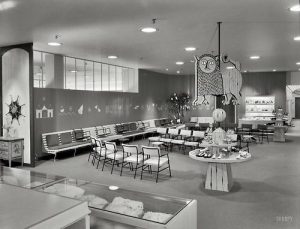
His first few years in America, he worked for a variety of department stores including Macy’s, Lord & Taylor, and Sak’s, designing their window displays and then moved on as a fashion illustrator for Vogue and Harper’s Bazaar.
From there, Loewy’s knack for design and his education in engineering attracted him to a variety of companies who all sought his guidance on their products. A relationship with the Pennsylvania Railroad starting in 1937 produced a number of iconic locomotive designs which today are synonymous with the art deco period. In addition to trains, he worked with the Indiana based automated, Studebaker not only creating many of their most recognizable designs, but also the corporate logo. Loewy would continue to be a hot name in the industrial and transportation industry, creating designs for airlines, automakers, and even NASA, but it was his work with Ansco which is why you’re here reading this article.
As with countless other companies, Ansco was in need of someone to design a product to help them stand out, so to Lowey they went. I could never find any specific information about how the Ansco/Loewy relationship started as so much of Loewy’s fame was in his other designs, not much was said about his time designing cameras.
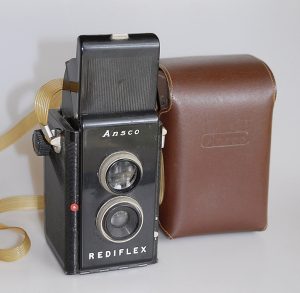
Before the Anscoflex, Ansco had produced a variety of medium format single and twin lens box cameras. Most used 620 format film which was Kodak’s answer to 120, featuring the exact same width film, but on thinner spools, allowing for smaller cameras to be made. Cameras like the Ansco Panda and Rediflex were produced before and after the war, but had a rather uneventful design.
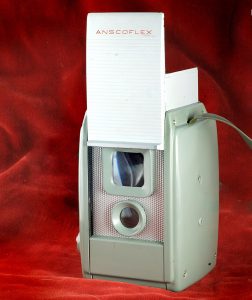
With the release of the Anscoflex in 1954, the company had something that really stood out from the competition. Featuring a black plastic internal chassis, surrounded entirely by an aluminum green drab colored body with a very large silver aluminum sliding door up front, and a red anodized metal shutter release, the Anscoflex looked like no other.
As was the case with most of Ansco’s mid 20th century cameras, the Anscoflex was a simple camera, meant to be used by those with little to no knowledge of photography. The camera had a simple focus free lens, and only a single shutter speed with no option for changing exposure settings. The camera was truly a “point and shoot camera” which was optimized for Ansco’s color slide and negative film of the day. To accommodate low light situations, the camera was often sold in a kit with a large Ansco flashgun that could be screwed onto the side.
When it went on sale in early 1954, the Anscoflex sold for $15.95 for the camera only, or in a kit complete with flash gun, 6 bulbs, 3 rolls of film, and a carrying case for only $24.95. These prices when adjusted for inflation compare to about $175 and $275 today,
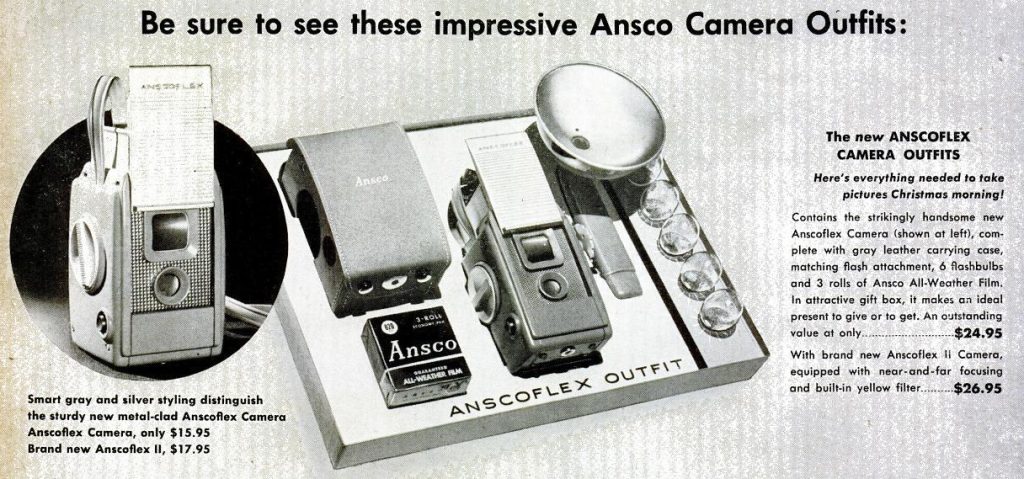
Within a few months, the Anscoflex II was released, which added two additional dials on the front of the camera. The first was a close focus filter that swung in front of the taking lens, and the other a yellow “cloud” filter which helped boost contrast with black and white film, otherwise the two cameras were identical. Like the first model, the Anscoflex II could be bought by itself for $17.95 (later $18.95) and in a kit for $26.95 which when adjusted for inflation compare to about $200 and $300 today. I have to imagine that given the chance to buy both models, most people would have went with the updated model for only $2 more.
During the era in which the Anscoflexes were sold, Ansco regularly used what they called their “Great Year” promotion. Many of the company’s ads for their cameras and films used the language that it’s a great year for something. Each of the four ads below all come from various issues of Popular Photography from 1954 to 1955.
The Anscoflex series was produced for at least four years. Some sources online suggest it was discontinued after 1956, but I’ve seen the camera advertised as late as December 1958, suggesting the camera was produced until then. It is even possible that new unsold stock might have been available in 1959, but it was almost certainly no longer being made.
No specific model seems to have taken it’s place as the company never again made any sort of similar twin or single lens box style cameras. The Ansco Color Clipper from 1958 was the company’s last medium format camera to be sold and it didn’t appear to be on the market very long, possibly being discontinued a year after it’s release in 1959. That these cameras exited the marketplace by the end of the 1950s likely had less to do with the performance of the cameras, but rather Ansco’s exit from the camera making business. Ansco’s biggest competitor, Kodak, was going through something similar, drastically discontinuing production of many of it’s camera models. Although Kodak would continue to produce Kodak branded cameras, none were medium format, and of the models that were still in production, most were rebadged Japanese made models.
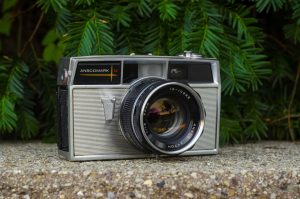
In 1960, Ansco would once again be linked to Raymond Loewy, but not on a product they built, rather the Japanese made Anscomark M 35mm rangefinder. This camera was made by Riken for Ansco as a result of a corporate agreement between Riken, and Ansco’s parent company GAF who agreed to exchange photo copier technologies for cameras. The Anscomark M was a very short lived camera, but contained Loewy’s trademark modern design with sharp edges.
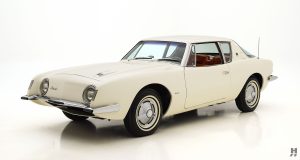
As for Raymond Lowey, he continued his work far past the era of Ansco making cameras. In 1961, Loewy came up with one of the most iconic automobile designs of his career, the Studebaker Avanti. From 1967 to 1973, he worked for NASA, coming up with space age interiors for the Skylab space station, and was an early consultant for designs of the space shuttle program. He would remain active using his vision until his retirement in 1980 at the age of 87.
The vast number and variety of designs attributed to Raymond Loewy is remarkable, but perhaps the most amazing part of his story is that unlike other well known designers of yesterday whose products are iconic pieces of history, many of Loewy’s designs can still be seen today. The classic shape of the Coke bottle, logos for companies such as Nabisco, Shell Oil, and Exxon are still recognizable by people today in 2022, extending his influence to well beyond a century.
Today, Loewy’s designs are popular in nearly every industry out there. From Mid Century Modern home design, to collectors of his works, people love things attached to his name. Ansco was smart to tap Loewy for the design of the Anscoflex as the camera wasn’t very memorable without it. Based on the look of similar twin lens box cameras like the Rediflex that came before it, it’s very likely you wouldn’t be reading this review today if it wasn’t.
For the collector who wants a simple snapshot camera from the 1950s, the Anscoflex is an excellent choice. For someone who wants to display a nice example of classic Mid Century Modern design, it is also an excellent choice. Whichever reason you prefer, the Anscoflex is an excellent choice and an easy addition to any collection.
My Thoughts
There are certainly many reasons to collect cameras. Maybe you have a preference for a specific brand or cameras made in a certain country. Maybe you like shooting cameras and geek out at the various technologies used over the past 150 years, or maybe you’re in it for the history.
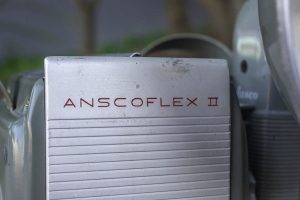
There’s no wrong reason to collect cameras (except maybe to turn them into lamps), and sometimes people collect them because they like the way they look. For the Anscoflex II, I fall into that last category. I bought this camera because I liked the way it looked!
The Anscoflex II certainly is a pretty camera, that even if you didn’t know who designed it, would very much recognize it’s mid century American styling. From the pastel green painted metal body to the anodized red shutter release and large metal garage door covering the front of the camera, this camera very much is reminiscent of that period of the past.
The Anscoflex belongs in a category of camera I call a “twin lens box camera”. Some people use the term “Pseudo TLR” as the camera shares a waist level finder and twin lenses like a TLR, but to me, with the non focusing brilliant viewfinder, simple single speed shutter, and focus free taking lens, these cameras share more in common with the classic box Kodak Brownies, just with a different shape and a larger viewfinder.
There are very few controls on the camera due to it’s simple operation. Normally sold with a large reflector flash screwed into the camera’s left side the camera is quite large and difficult to carry around. I imagine that many users of this camera would remove the flash and leave it at home, only to be used in special occasions. At the very least, the flash automatically syncs to the shutter when mounted. There are no wires or anything to connect to make it work.
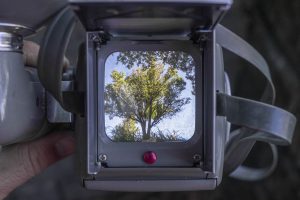
The Ansoflex is designed to be held at waist or even chest level, but due to the design of the convex piece of glass in the viewing screen, holding the camera too close to your face will obscure part of the image, making composition impossible. Since the Anscoflex has a non focusing lens, there’s no need for things like a magnifying glass or sports finder, just aim the camera at what you want, make sure what you want to capture is at least 6 feet away and visible in the very bright and easy to see through viewfinder, and press the shutter release.
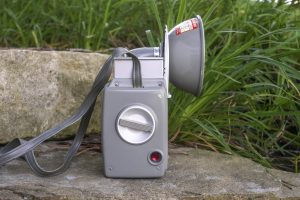
The camera’s right side is dominated by the film advance wheel. Unlike other twin lens cameras, the film advance does not continually spin. Advancing the film requires several rocking motions where you turn the handle back and forth until the next exposure number shows up in the red window on the back of the camera. The Anscoflex has a primitive double exposure prevention feature that prevents the red shutter release button from being pressed immediately after a previous exposure. This feature however is defeated the moment you start to advance the film, so it is possible to press the shutter release only after barely beginning to advance the film, overlapping your previous image. You must pay special attention to the exposure numbers, making sure you have completely reached the next exposure before pressing the shutter release again.
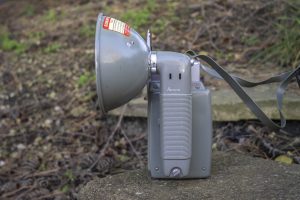
The camera’s left side is where the flash is connected. The flash itself is powered by two size C alkaline batteries that are installed under a plastic handle inside of the flash handle. When the flash is removed, this side of the camera only has the screw thread hole and flash sync port visible.
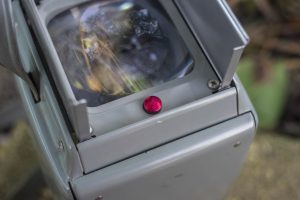
By far, the neatest feature of the Anscoflex is the metal garage door that covers the entire front of the camera. This door is coupled to the two flaps that also cover the viewfinder, so when opening the front, the flaps above the viewfinder also open allowing you to see through the viewfinder. The red anodized button below the viewfinder is the door release, which is explained below.
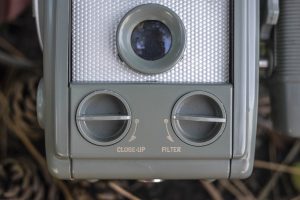
With the door open, the round taking lens and much larger square viewfinder lens are visible. The Anscoflex is a focus free camera with no settings for exposure. You cannot change shutter speeds or even change f/stops through a primitive Waterhouse style plate like some other simple box cameras could. Your only controls for the camera are the two dials beneath the taking lens which are only present on the Anscoflex II, not the original version. The left dial rotates in a close up filter in front of the taking lens, reducing the focus distance to about 3.5 to 7 feet. The second dial rotates in a yellow filter which is used to boost contrast when using black and white film. Only one of the two filters can be used at a time as trying to activate them both will cause the filters to block each other.
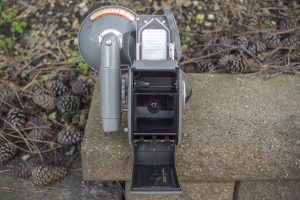
Opening the film compartment is done by pressing the red anodized button behind the viewfinder. This location means the button is hidden when the viewfinder is closed, eliminating any chance that the film compartment could accidentally open while the camera is in storage.
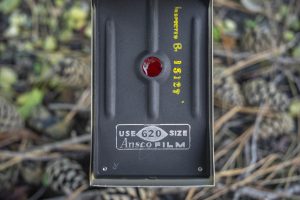
The bottom hinged film door swings down to reveal the film compartment. The bottom film spool holder is connected to the door and automatically swings out when opening the door, making installing a new spool very easy. Film transports from bottom to top onto metal 620 spools. Unlike some other simpler cameras designed for 620 film, there is no way to fit regular 120 spools into the camera as the fit is just too tight. Although many people on the Internet suggest trimming plastic 120 spools down to 620 size, I find this to be a very bad idea. By far, respooling 120 film onto 620 spools is the only option I recommend, and only takes minutes to do.
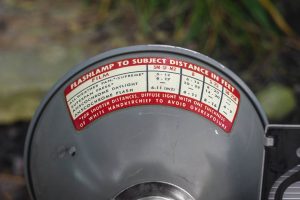
For anyone using the flash, a flash distance guide is printed on the rear of the flash reflector. It shows a variety of different ANSCO films (sorry Kodak) and recommended distances for a variety of different flash bulbs. Since the camera has a fixed focus, these distances are how far your subject should be from the camera. As best as I can tell, the speed for Anscochrome Daylight was ASA 32 and Ansco Superpan Press was 125. The faster the film, the farther away the flash could reach. Using the flash with faster films and your subject too close would almost certainly wash out your subject with too much light.
I find it funny that at the bottom, it recommends that for shorter distances, you can diffuse the light by draping a handkerchief over the bulb. These style of bulbs are notorious for getting very hot after going off, so if you were to do this, be sure to remove the handkerchief immediately!
The Anscoflex II, like most cameras of it’s type, were designed to be very simple to use. The addition of the close up and yellow filters add a bit of flexibility in situations where the camera can be used, but for the most part, it was designed to be point and shoot. The majority of people who would use this camera could have gotten similar results from other similar cameras made by American companies like Kodak, Argus, and others. I would guess that the biggest selling feature of this camera was it’s Loewy design which was common in a huge number of mid 20th century industries.
This camera is appealing today for the same reasons it was back then, simple operation and good looks, but what kinds of images does it make? Keep reading…
My Results
Whenever I shoot a camera for the first time, I make an attempt to pick a film that I think will give the camera the best chance at working well. Often I’ll go with a safe 100 speed film and shoot cameras with adjustable speeds at or near 1/100 – 1/125 as those are the speeds that are most likely to work on most leaf and focal plane shutters. For simpler cameras with single shutter speeds, I’ll usually go with something slower, like 25 or 50 speed films.
For the Anscoflex II, I chose some expired Arista.Edu 100 film…. I was donated a bunch of this film from site reader Alan King earlier this year and this was the first time I touched the Arista.Edu stuff. There were no dates printed on the packaging, so I had no idea how old the film was. I figured that using an expired 100 speed film in a camera with a shutter speed in the realm of 1/50 would get me pretty good exposures, so I went with it!
It looks like my choice of film was a good match for the Anscoflex II. 100 speed black and white films are known for having good latitude, so even if the shutter was operating faster or slower than it should, most likely these images would have come out fine. There is a bit of streaking and uneven exposure, possibly due to interaction with the backing paper, but certainly not something I can blame the camera for.
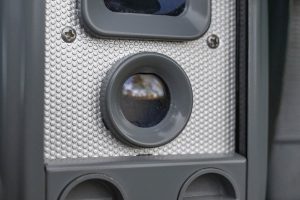
I could not find any information anywhere about the composition of the lens on the Anscoflex. Neither the user manual nor contemporary literature mention it’s design. While simple box cameras often had single element meniscus lenses, these type of lenses usually have poor sharpness and uneven detail around the edges. The exposures from this camera do show considerable softness near the edges, but overall are pretty sharp, suggesting this is more than just a single element lens. My best guess is that this is a doublet, but if so, I find it strange that Ansco never once took the opportunity to promote that, as Eastman Kodak was very proud of their Doublets, almost always calling attention to them when used.
Another oddity of the lens is that it does not appear to have any sort of optical or color coating. To the naked eye, the glass is without the trademark color tints seen on all coated lenses. Even Kodak’s lumenized coatings show a bit of color that isn’t present here. Once again, Ansco made no mention of the lens being coated, which leads me to believe it isn’t. If so, it is really strange that a camera sold so late into the 1950s would still have an uncoated lens as most cameras, even cheap ones, had it in the years immediately after World War II.
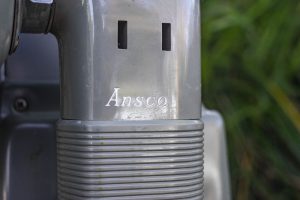
Whatever the composition of the lens, it certainly is good enough for the target market. The images I got from it are quite nice and show off a good amount of detail in the expired film. I think that with fresh film, I could have gotten a more even exposure in the skies and possibly less grain, but overall I am pleased with the images. Part of me regrets not shooting a roll of color film through the camera, but I fear with it’s uncoated simple optics, the images likely would show low contrast and washed out colors, typical of lesser cameras. With worldwide supply problems for color film, I am a bit more discriminate on which cameras I want to use color on and this wasn’t one.
The Anscoflex II is certainly a capable camera that is a lot of fun to shoot. The images it makes are good, but also show optical imperfections that you’d expect from a more basic camera. If you want a 6cm x 6cm film camera that makes excellent with perfect contrast and razor sharpness from corner to corner, shoot a Rolleiflex, but if you want something that makes images with distinct character, the Anscoflex II is a terrific option. As an alternative, if you have no intention of ever shooting one, they look great on a shelf!
Related Posts You Might Enjoy
External Links
http://camera-wiki.org/wiki/Ansco_Anscoflex
https://alysvintagecameraalley.com/2020/06/18/the-anscoflex-ii/
https://shootfilmridesteel.com/the-box-camera-and-raymond-loewy-the-anscoflex-ii/
https://mikeeckman.com/photovintage/vintagecameras/anscoflex/index.html
https://sites.google.com/site/contraptionsinphoto/ansco-anscoflex-ii
https://www.junkstorecameras.com/project/anscoflex-and-anscoflex-ii/
http://www.jollinger.com/photo/cam-coll/cameras/Ansco_Anscoflex2.html

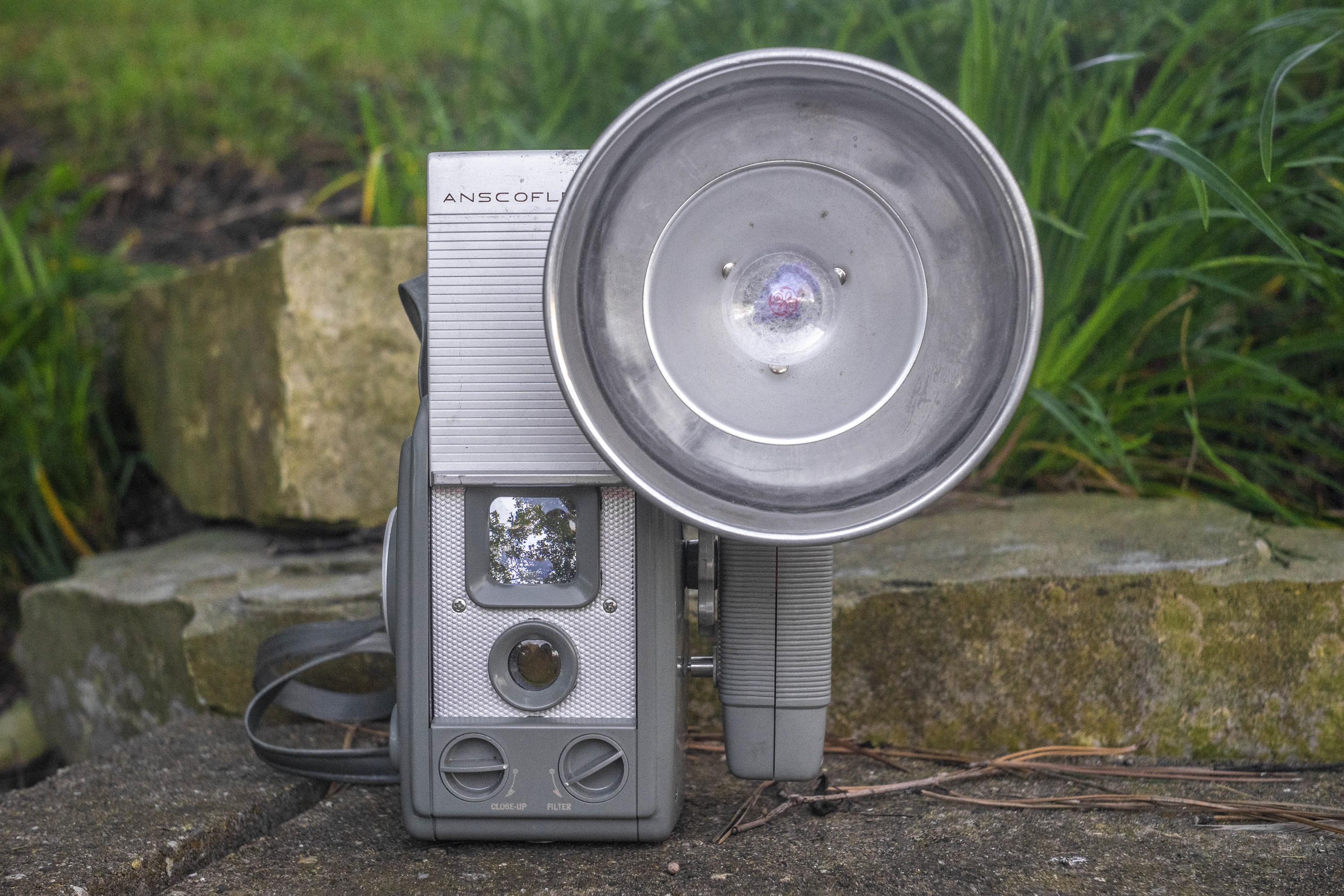
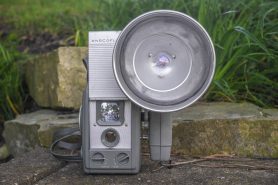
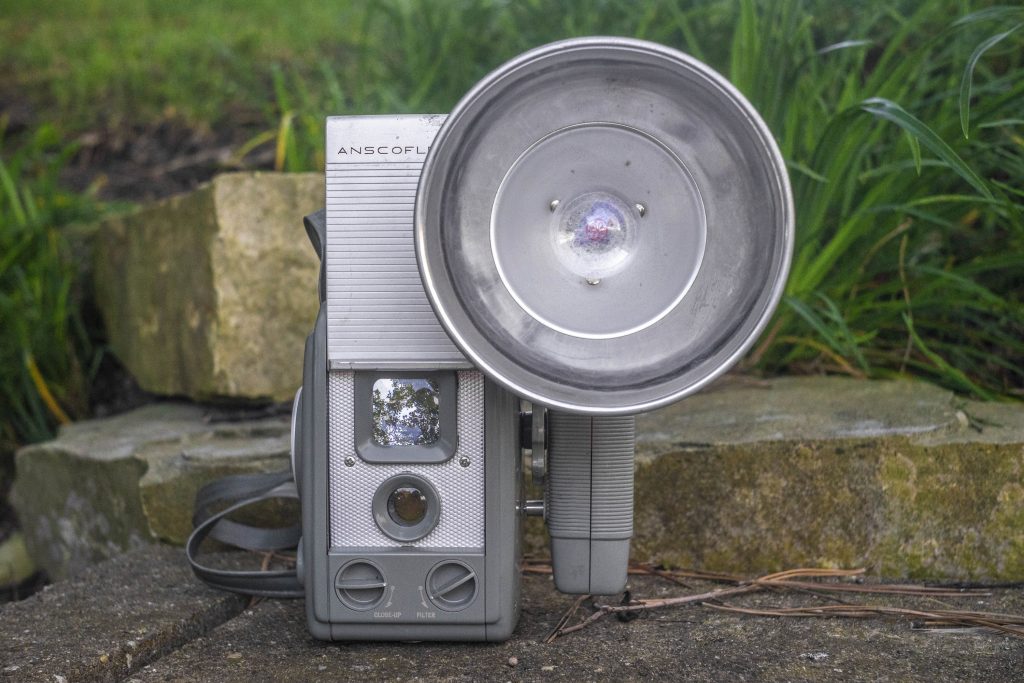
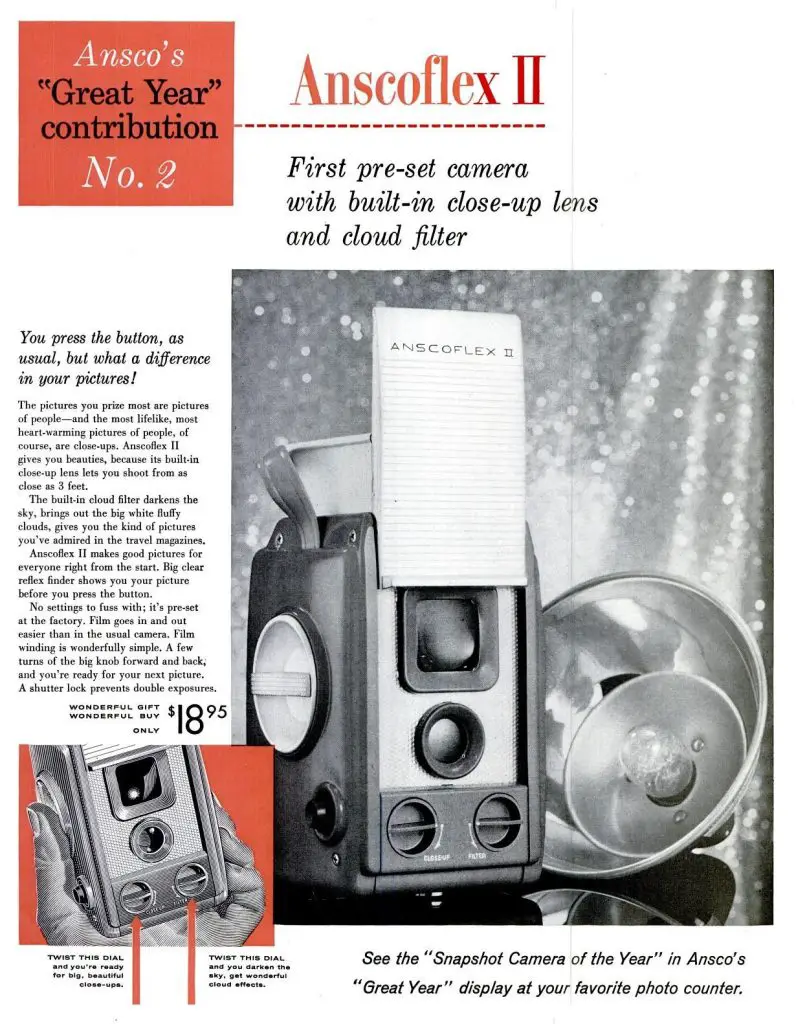
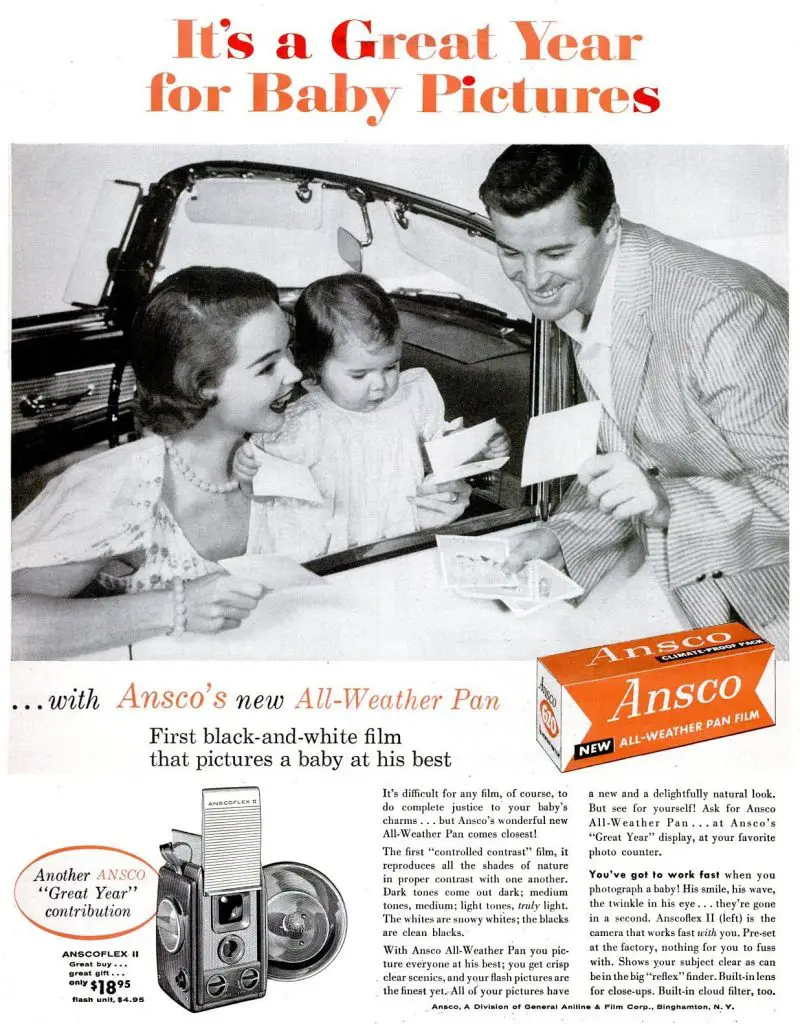

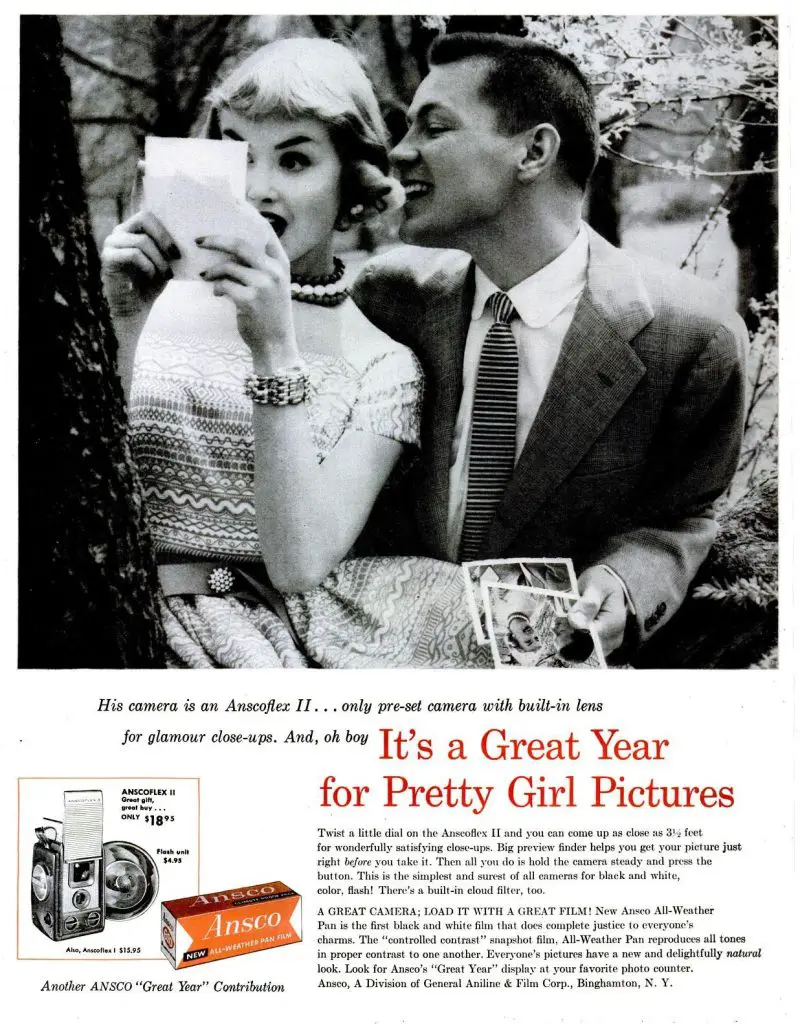












Excellent article!
Such a lovely camera. Too bad its so basic. Still, I want to try one.
I took an Anscoflex apart to clean it and I can definitely say that the lens is made of a pair of simple meniscus lenses with the concave faces facing together (like a pair of parentheses) and with the aperture stop in between. I did get the camera back together, too.
Thanks for the confirmation on the doublet design. I was pretty certain that’s what it was based on what I had read and the performance of the lens, but it’s good to get someone who can confirm it!